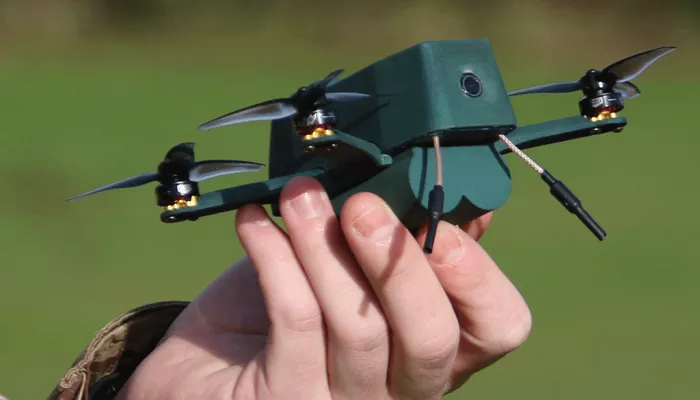The Bug Nano Drone is a cutting-edge nano-unmanned aerial vehicle (UAV) developed by BAE Systems in collaboration with UAVTEK. Designed for military reconnaissance and surveillance missions, this compact drone offers advanced capabilities in a lightweight package. In this comprehensive guide, we will explore the features, specifications, and cost of the Bug Nano Drone as of 2025.
Overview of the Bug Nano Drone
The Bug Nano Drone is engineered to provide real-time intelligence to military personnel in challenging environments. Its small size and advanced technology make it an invaluable asset on the battlefield.
Key Features
- Weight: 196 grams, comparable to a large smartphone.
- Flight Time: Up to 40 minutes on a single charge.
- Range: Operational range of up to 2 kilometers on 5.8GHz radio bandwidth; up to 50 kilometers on LTE.
- Speed: Maximum flight speed of 80 km/h.
- Camera: High-resolution camera with optional thermal imaging capabilities.
- Weather Resistance: Capable of operating in wind speeds up to 50 mph.
- Stealth: Low visual profile for covert operations.
Design and Capabilities
The Bug Nano Drone is designed for ease of use and versatility in various mission scenarios.
1. Portability
Its compact size allows soldiers to carry it easily, and it can be launched by hand, from the ground, or from a vehicle.
2. Autonomy and Control
The drone features autonomous flight capabilities, including pre-planned missions and GPS “follow the leader” functionality. It can be controlled locally or remotely, depending on mission requirements.
3. Data Transmission
The Bug can simultaneously transmit data to multiple devices such as mobile phones, laptops, tablets, and Android Team Awareness Kit (ATAK), enhancing situational awareness for various units.
4. Payload Capacity
It has a normal payload capacity of up to 50 grams and can carry payloads up to 100 grams while remaining within the 250-gram weight limit. Payload options include microphones, loudspeakers, various lighting options, interchangeable lenses, mapping cameras, thermal cameras, and distraction devices.
Operational Use
The Bug Nano Drone is utilized for a range of missions, including reconnaissance, surveillance, and target acquisition. Its ability to operate in harsh weather conditions and its stealthy design make it ideal for covert operations.
Cost Analysis
While the exact cost of the Bug Nano Drone is not publicly disclosed, it is considered to be cost-effective compared to similar nano-UAVs. For instance, the Black Hornet Nano Drone is reported to cost approximately $40,000 per unit when purchased in bulk . Given the Bug’s comparable capabilities and the emphasis on affordability by its manufacturers, it is reasonable to infer that its cost is competitive within this range.
Global Adoption
The British Army has procured 30 units of the Bug Nano Drone for testing and operational use. The drone demonstrated exceptional performance during the Army Warfighting Experiment (AWE), particularly in adverse weather conditions .
Conclusion
The Bug Nano Drone represents a significant advancement in military UAV technology, offering a blend of portability, advanced features, and cost-effectiveness. Its adoption by the British Army underscores its operational value. As military operations increasingly rely on real-time intelligence and autonomous systems, the Bug Nano Drone is poised to play a crucial role in modern warfare.


